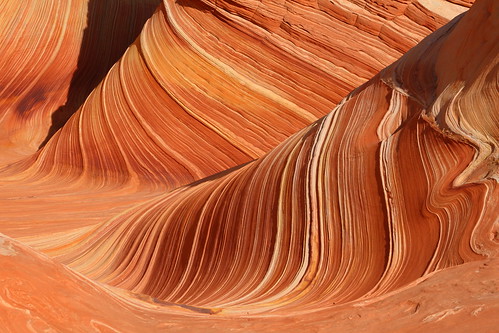The Wave, Coyote Buttes, Arizona
In Arizona, there is a sandstone rock formation known as 'The Wave' that is famous among hikers and photographers for its colourful, undulating forms, and rugged, trackless hike required to reach it. Probably not the yellow-est landscape, but it's close, and way too sick to leave out!
 |
http://beautifulplacestovisit.com/canyons/the-wave-coyote-buttes-arizona-united-states/
The Wave exposes large-scale, sets of cross-bedded eolian sandstone composed of rhythmic and cyclic alternating grainflow and windripple laminae of bright oranges and yellows. This formation represents periodic changes in the prevailing winds during the Jurassic as huge sand dunes migrated across a sandy desert. Source: https://en.wikipedia.org/wiki/The_Wave,_Arizona |
 |
| https://www.flickr.com/photos/72213316@N00/4512880348 |
Antelope Valley, California
 |
| https://en.wikipedia.org/wiki/Antelope_Valley |
 |
| http://www.allposters.com/-sp/California-Golden-Poppies-Blooming-Antelope-Valley-California-Poppy-Reserve-Antelope-Valley-Posters_i6433702_.htm |
North Dakota Sunflower Fields
 |
| http://outpostusa.org/Expeditions/Theodore%20Roosevelt/Getting%20There.html |
 |
http://entomology.unl.edu/extension/crops/sunflower
|


